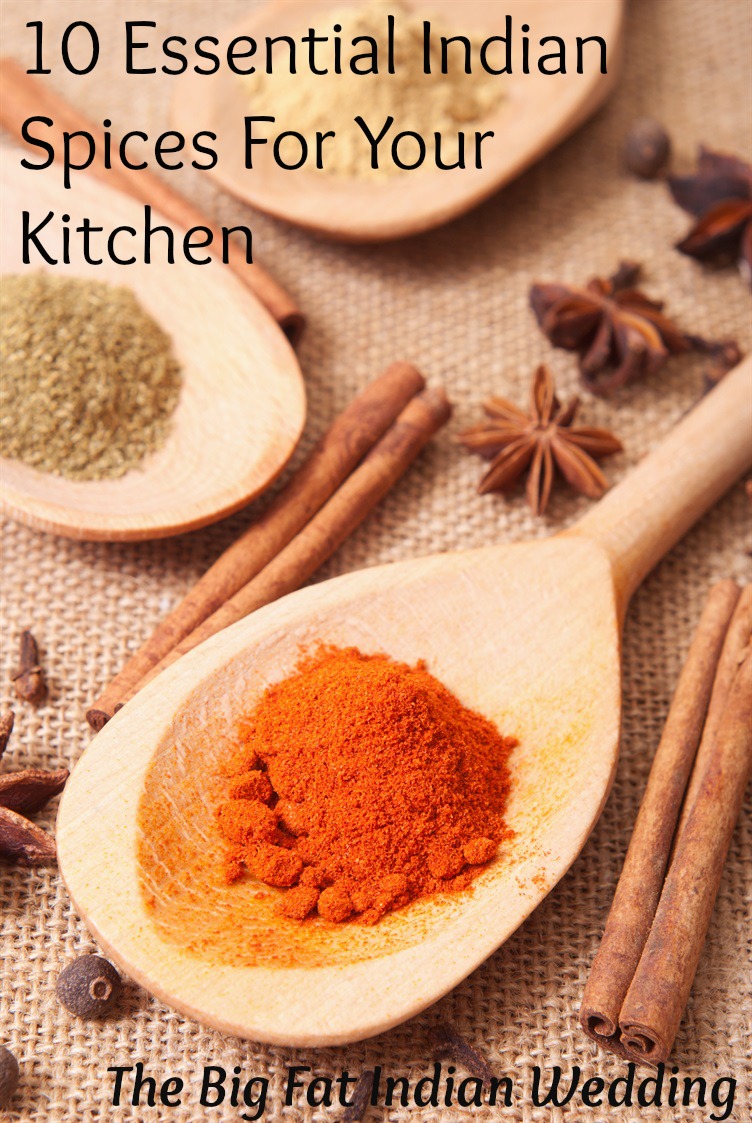When I first moved away from home to attend college, my mom prepared a spice tin for me, filled with piles of aromatic, colorful Indian spices. I always loved Indian food, but making it for myself initially seemed like too much of a hassle.
However, I quickly learned that fixing myself a plate of my favorite subji or rice wasn’t very difficult at all when I had the basic, interchangeable seasonings at hand – and in fact, it even quelled my homesickness a bit. I’ve lived in many different places far from my mother’s kitchen, but whenever I crave some satisfying homemade Indian food, I never have to look further than my pantry!

Here are 10 essential spices every seasoned and aspiring Indian chef has in her kitchen:
1. Asfoetide (“hing“)
Add this pale yellow powder to hot oil to sizzle before frying your veggies. It has great digestive benefits and gives off a smooth, subtle flavor.
2. Black Mustard Seed (“rai“)
After these seeds crackle and pop in hot oil, your food will have a tart, salty flavor that’s familiar in any Indian dish. You’ll see these infamous “black dots” in every food from biryani to dals.
3. Cumin seeds (“jeera“)
Also part of the crackling fodni that is added to oil before frying, cumin seeds add another slightly bitter but distinctive earthy flavor to the meal. These seeds are common in most Indian meals, but especially curries and dals.
4. Curry Leaves (“kadipatha“)
These dried leaves are also added to hot oil before frying. While they are not supposed to be eaten, they do give off a warming curry flavor to the meal.
5. Turmeric (“haldi“)
The famous yellow haldi has many uses – including a beautifying ritual in Hindu weddings – but its most often consumed in subjis and dals. Any yellow color in Indian food comes from this versatile, slightly sweet spice.
6. Coriander-Cumin Powder (“dhana-jeera“)
Ground coriander and cumin adds a fresh and flavorful taste to many Indian dishes – it is the spice used in the largest quantity in most Indian foods. A teaspoon or two of dhana-jeera will make your food taste hearty and delicious!
7. Chili powder
This spice is used sparingly – even Indian food has its limits on spicy hot! Pure, ground chillies are a long-lasting ingredient in any pantry, but you can opt for fresh, sliced chillies instead for a similar kick to your dish.
8. Chaat Masala
The famously spicy and delicious Bombay street foods are all called “chaat” because they’re spiced with a blend of sweet and sour spices. Chaat masala is found in appetizers such as bhel and pani puri or main courses such as channa masala. The tart taste also goes well with fresh fruit for some yummy fruit chaat!
9. Garlic (“lasoon“)
The distinct creamy, tart garlic flavor comes in handy for any savory dish – whether in powder or fresh form. Garlic is great for your heart and blood circulation. It’s also known to have some cancer-resistant properties.
10. Ginger (“adrak“)
Ginger is a zesty, earthy herb that can be grated or chopped into any Indian dish for additional flavor and digestive aid. It’s most common in dals, or a thick ginger-garlic paste that’s used as a base for many meat dishes. Ginger is also a great spice to consume with tea when you’re feeling sick!
Although I’m always craving my mom’s homemade dal, it certainly helps to have everything I need to make my own version when I’m away from home. With these essential spices, you’ll have everything you need to season your favorite Indian dish, whether it’s rajma or bhindi. As for what to buy to put into the dish – you’ll have to give your mom or favorite Indian chef a call to find out!
